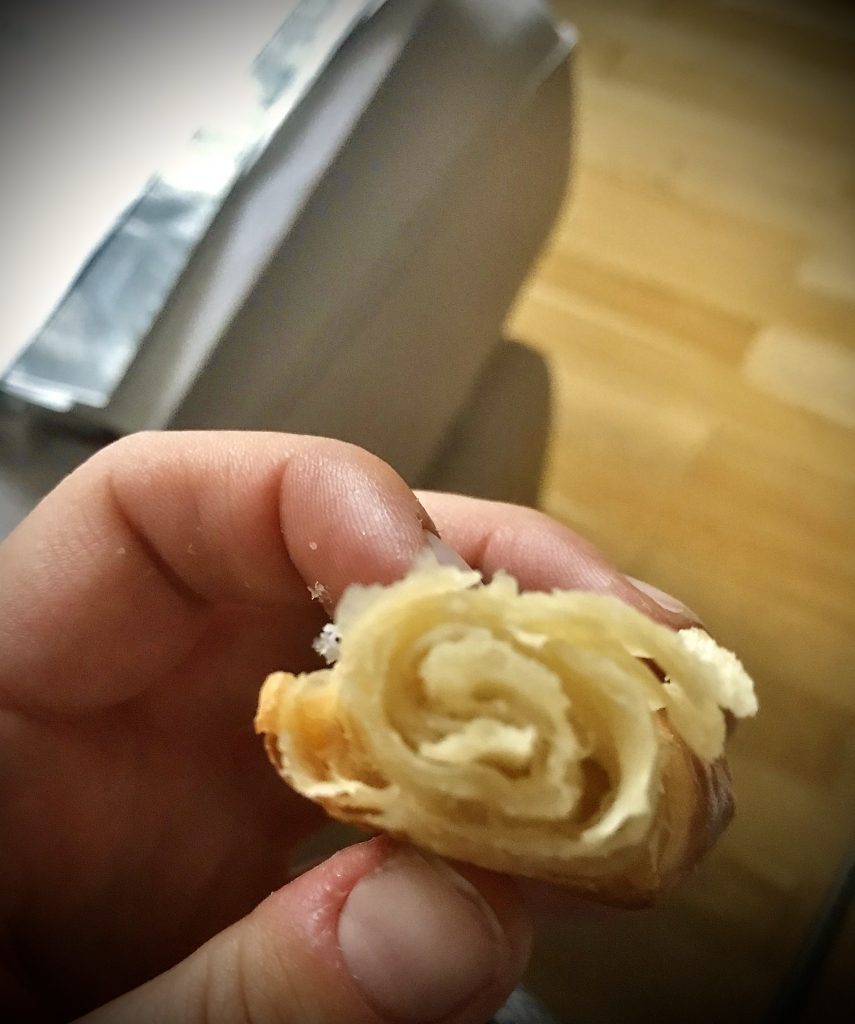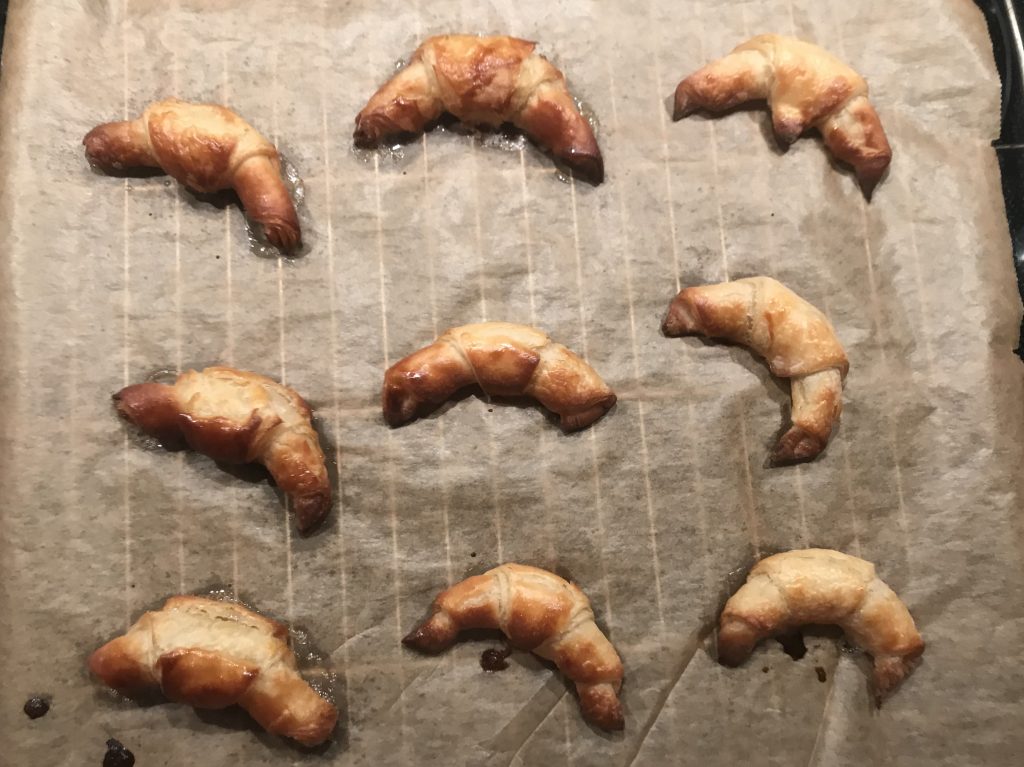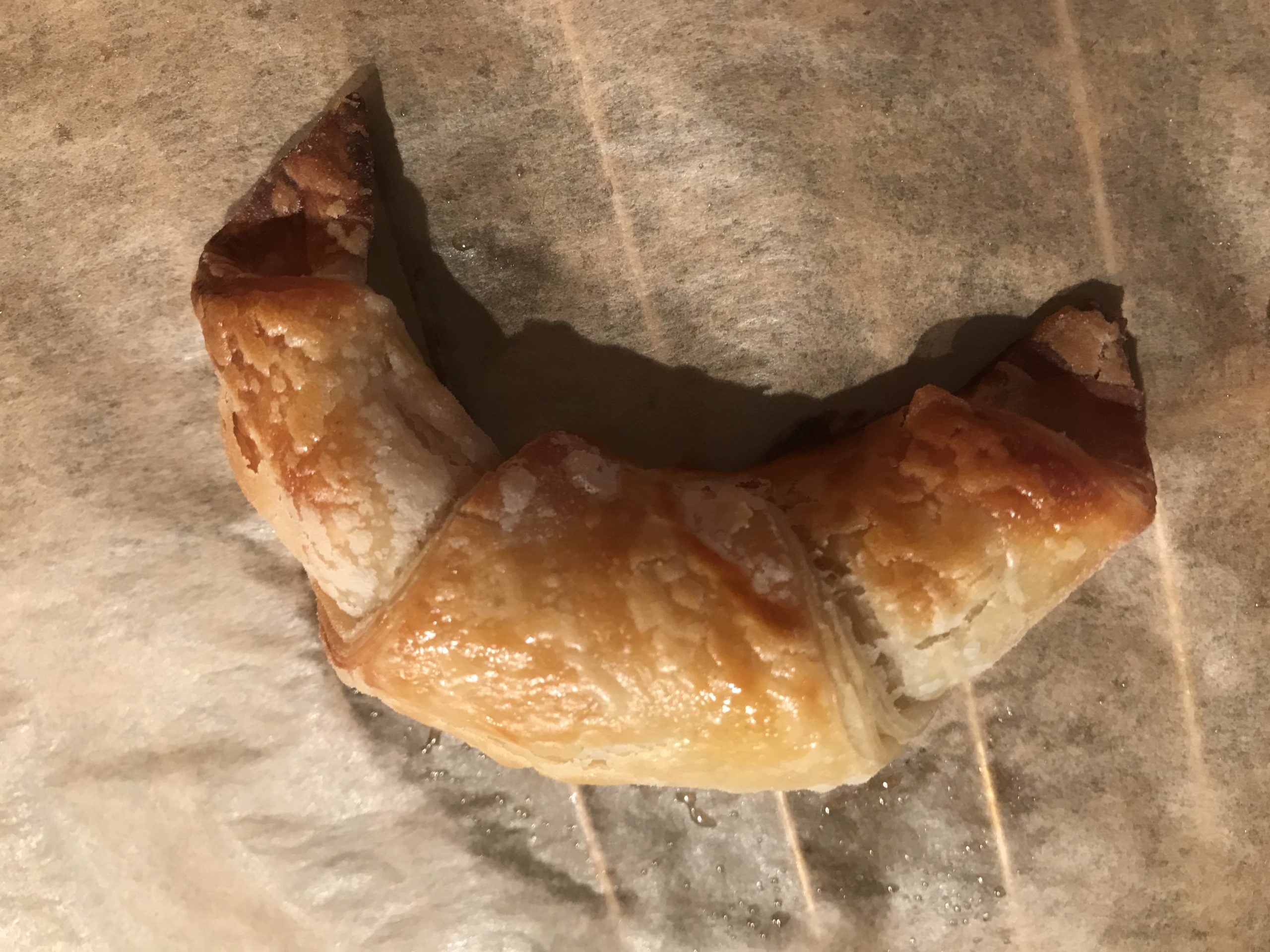Quarantine = Baking Time. But then any time is baking time and I‘m only self-isolating not quarantining and that was a bad rhyme anyway, a so-called unreiner Reim, and we don’t want no unrein, dirty, contaminated stuff, just everything disinfected and hand-washed often. And I can do better. Wait for it.
There was a young lady in isolation
Who dedicated her time to the creation
of lots and lots of baking
and currently in the making
is a French and buttery revelation!
To kill the time in these times where killing the time alone at home kills the pandemic, I set out for a project that requires time and patience en masse: I made Croissants from scratch! Et mon Dieu, c’est magnifique! The secret to a perfectly flaky, tasty pastry, of course, lies in the butter. Anything tastes better with butter. And when you bite into a croissant, you gotta taste it. Every bite must feel like it’s worth all the calories and like a pure act of sin and indulgence. So butter use plenty.
Apart from 250g butter, we also need 25g fresh yeast (hard to get by, I know), 500g all-purpose flour, some more on the side, 125g full-fat milk, a pinch of salt, 200ml cold water, 40g white sugar, an additional 3 tbsp of milk and 1 eggyolk.
If you want fresh croissants the day after tomorrow you better start baking today. That’s how long it takes. But it’s worth it. Oui, oui!
Butter and yeast should be at room temperature. Mix flour and salt in a bowl. Pour water, milk and sugar in a cup and heat it up in the microwave. Just a tad, not boiling hot. Crumble the yeast into it and stir until its dissolved in the liquid. Make a little dent in the middle of the flour and pour in our creamy yeastfeast. Cover it up with flour, cover the whole thing up with a towel and let it rise for half an hour. Time to do nothing, relax, vacuum the apartment, do the laundry, exercise, check instagram and twitter (very important in times of a pandemic. You really don’t wanna miss out on all the conspiracy theories.).
Ready? Have some water and some flour ready, just in case, and start digging in with your (washed) bare hands and start kneading, adding more and more flour from the outer areas of the bowl until you have a smooth dough ball. If it seems to dry or to wet, add water or flour accordingly. Once you’re happy with the consistence of our dough ball, cover it up again with a towel and let it rise for another half an hour. Time to do any of the previously mentioned tasks or something completely different but this time get back to the kitchen a few minutes early and get the butter, a rolling pin, more flour and some parchment paper ready.
Give the well-risen dough another knead, take it out of the bowl and divide it into four parts. Quarter the butter as well. Roll out the first dough portion so that it’s about DIN A4-sized. Use plenty of flour while doing so and frequently turn over while rolling. Place a slice of butter in the middle and roll it out until it’s appr. postcard-sized. Now fold in the longer sides of the pastry, then the shorter ones in such a way that they’re overlapping. Wrap it up in cling foil and store it in the fridge for at least 4 hours. Repeat with the other three portions.
*4 hours later*
Unwrap each portion and roll it out lengthwise, again with the aid and add of plenty of flour and plenty of turn-overs. Two things might happen which we don’t want to happen 🙁 the butter breaks. If that happens, just let it warm up to room temperature or let the room warm up, too, and try again. If the dough is too sticky, it’s gotta go back to the fridge for a little longer. If all goes well, we fold it back up, without the long sides (that was just to keep the butter in), just the overlapping shorter sides. Repeat. Repeat. Repeat. Yes, we’re doing that whole procedure 3-4 times. French Origami for buttery delights and manifold layers of tender flakiness.

After the last roll-out, there’s no fold-in. Instead, we cut each pastry into lengthy triangles and roll each triangle up, starting with the long side. The recipes I found suggested to moisturize the surface before rolling it up so it sticks together but I didn’t and it still stuck. Bend them slightly into croissant shapes and put them on a baking tin lined with parchment paper. Leave a decent amount of space in between for they will rise and shine, and shine even more if you brush them with an eggyolk-milk mixture and put them in the preheated oven at 190°C for 15-20 minutes.
Smells good, doesn’t it?
Das Beste was einem Croissant passieren kann, ist mit einem Stück Butter bestrichen zu werden.
Pablo Tusset
The best croissants, however, don’t need extra butter. They are rich and intense and tender and flaky and tasty and buttery and hey, if you start now, they’re ready just in time for Mother’s Day. So hush, little darlings, and off you go to the kitchen.

